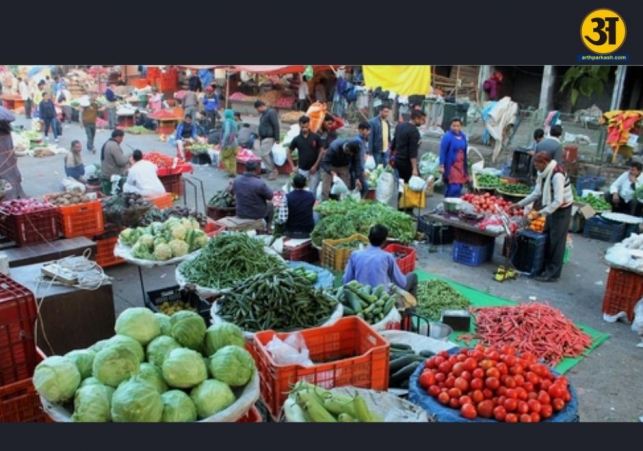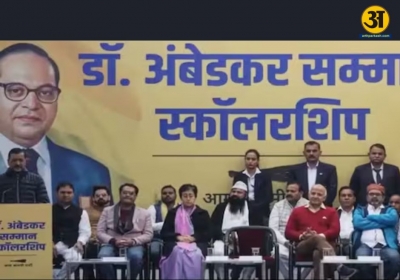
Delhi’s Vegetable Vendors must display names and numbers on carts
Delhi Vendors in Vegetable Markets ordered to display names and numbers on carts
In a bid to curb the issue of "illegal" migration and to better regulate street vendors in Delhi’s Najafgarh area, local authorities have introduced a new rule requiring all vegetable vendors to display their names and phone numbers on their carts. This move, announced by the local councillor and the market association, is said to be aimed at tackling the increasing number of unidentified sellers, particularly from Bangladesh and the Rohingya community, who allegedly infiltrate the market.
The new regulation stipulates that every vegetable cart in the Najafgarh market area must clearly display the vendor's name and contact number. This will allow for easier identification and accountability, helping market authorities and law enforcement officials track vendors. Vendors will also have to undergo a verification process, presenting documents such as their Aadhar card to ensure their identities are legitimate.
Market Vendors will be assigned Unique Numbers
The market association has stated that each cart will be given a unique identification number, and the process of identity verification will be completed by November 20. The goal behind this move is to improve the overall management of the market, as well as to ensure that only authorized and legitimate sellers are operating there. According to the Najafgarh Vyapar Mandal president, Santosh Rajput, the list of verified vendors will be forwarded to both the Municipal Corporation of Delhi (MCD) and local police for security purposes.
Rajput explained that this rule will help improve the functioning of the market by giving customers a way to address grievances directly. Buyers can report any complaints they may have about the quality of produce or the behavior of vendors. Furthermore, it will assist authorities in identifying and removing unauthorized vendors, especially those allegedly involved in illegal activities.
The local BJP councillor, Amit Kharkhari, clarified that the new rule was not intended to discriminate against any community but was introduced purely for security and administrative reasons. However, this rule has sparked controversy, as similar regulations in other states, like Uttar Pradesh and Himachal Pradesh, have been withdrawn due to accusations of being discriminatory.
The introduction of nameplates for street vendors in Najafgarh comes amidst growing concerns about the increasing number of unregistered and illegal street vendors in the area. These vendors are reportedly from Bangladesh and Myanmar, and their presence has been linked to several complaints of illegal activities, including the sale of goods without proper documentation.
ALSO READ: Thick smog disrupts Flights in Delhi and Punjab as air quality worsens
Impact on Street Vendor System
Previously, various states, including Uttar Pradesh and Himachal Pradesh, had also tried implementing similar policies for street vendors, such as requiring identification tags. However, these attempts faced significant backlash from the public, with critics arguing that such measures were discriminatory, especially toward certain communities. The controversy around these measures led to their eventual reversal.
In Najafgarh, the new rule is seen as a way to streamline the street vendor system and enhance transparency. Vendors without a proper nameplate displaying their name and phone number will not be allowed to continue selling produce. This is expected to create a more organized environment in the market and enable better law enforcement.
Local political leaders, including those from the opposition, have voiced their support for the measure, arguing that it will help curb illegal activities and improve the overall functioning of the market. However, some vendors have expressed concerns over the new regulation. Many feel that this could lead to unnecessary harassment, and that it might create a bureaucratic burden for small-scale vendors, who might already be struggling to make ends meet.
As the verification process moves forward, vendors have been asked to provide official identification, with the aim of ensuring that those operating in the market are residents of the area and authorized to do business. This initiative is expected to bring greater accountability and reduce the influx of unauthorized individuals selling goods, particularly vegetables, in the locality.
Rising Onion prices in Delhi and Mumbai
While street vendors in Najafgarh are adapting to new regulations, other concerns regarding the cost of living continue to affect Delhi and Mumbai residents. One such issue that has dominated headlines is the sharp rise in onion prices, which have soared to ₹70–₹80 per kilogram. This price surge has created a ripple effect, raising alarm among both consumers and sellers.
The increase in onion prices is not just a localized problem; it has affected several cities across India, including Delhi, Mumbai, and others. The price hike has left households scrambling to adjust their budgets, and many consumers are now feeling the pinch. Vendors have had to increase their prices, with some attributing the hike to higher procurement costs from wholesale markets.
In Delhi, onion prices rose from ₹60 per kilogram to ₹70, and in some areas, they have even touched ₹80 per kilogram. Sellers in the market claim that the cost they pay at wholesale markets influences the prices they charge. Despite the price increase, onions remain a staple in Indian kitchens, and most households continue to buy them, although sales have decreased due to the high prices.
Consumer reaction to rising prices
The rising prices of onions have caused distress among buyers, particularly those who rely on onions for daily cooking. Faiza, a buyer in Delhi, shared her frustration, stating that the price hike has negatively impacted her household’s food-eating habits. “Onion prices should have come down with the season, but they have shot up. I had to buy onions at ₹70 per kilo, and it’s affecting the food budget,” she said.
In Mumbai, a similar situation is unfolding. Dr. Khan, a consumer, expressed his concern over the steep rise in prices, stating that the cost of both onions and garlic has more than doubled. He noted that this was putting additional pressure on the household budget, particularly for families that rely on these items as kitchen essentials.
Despite the increased costs, some buyers remain hopeful that the prices will eventually drop, comparing the rise in onion prices to the fluctuating trends of the stock market. “Like the Sensex, the onion prices will also eventually come down,” said one buyer, trying to maintain optimism.
Impact on sellers and market trends
For vendors, the situation is equally challenging. Some sellers have reported a reduction in sales due to the price increase, but they note that onions are such an integral part of everyday cooking that customers are still purchasing them, albeit in smaller quantities. One vendor shared that even though the price has risen from ₹60 to ₹70 per kilogram, people are still buying, but the sales are slower compared to earlier.
The rise in onion prices has led to a broader discussion about market volatility and the challenges faced by both consumers and vendors. As the prices continue to fluctuate, both groups are finding it difficult to adjust to the ever-changing costs of essential vegetables.
In response to the price hikes, some buyers have urged the government to take action and reduce the prices of essential vegetables like onions. “The price of onions should have come down by now, given that it’s a seasonal product. I appeal to the government to intervene and lower prices, especially for vegetables that are used every day,” Faiza added.
The rising onion prices in Delhi and Mumbai serve as a reminder of the challenges faced by everyday consumers, and highlight the need for effective price regulation and intervention to protect both consumers and vendors from market volatility.
In conclusion, while the new street vendor regulation in Najafgarh aims to enhance security and improve market management, the rise in onion prices reflects ongoing issues in the vegetable market that continue to affect consumers and sellers alike. Both of these developments are indicative of broader economic challenges that require careful attention and policy intervention to ensure fairness and stability.





